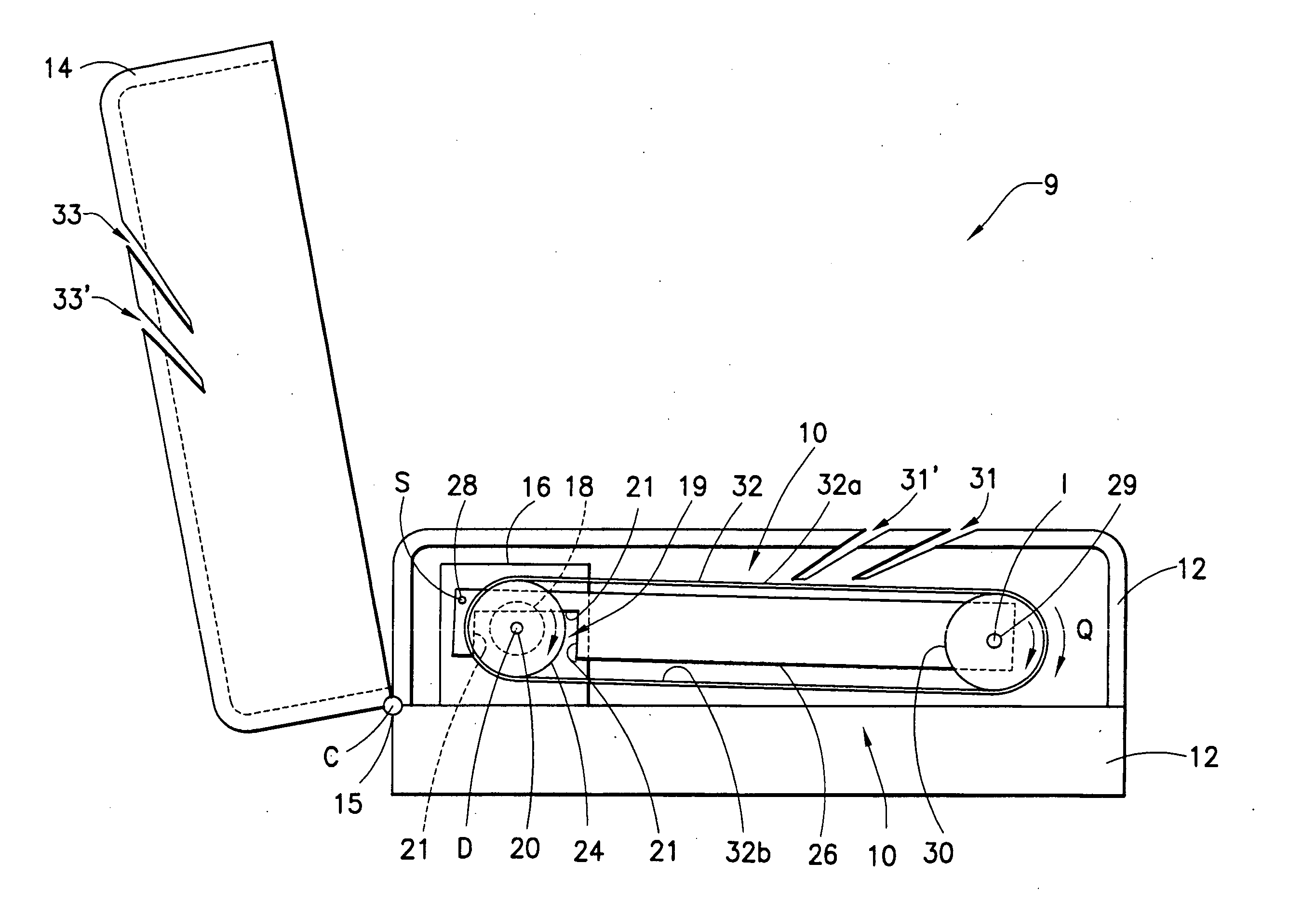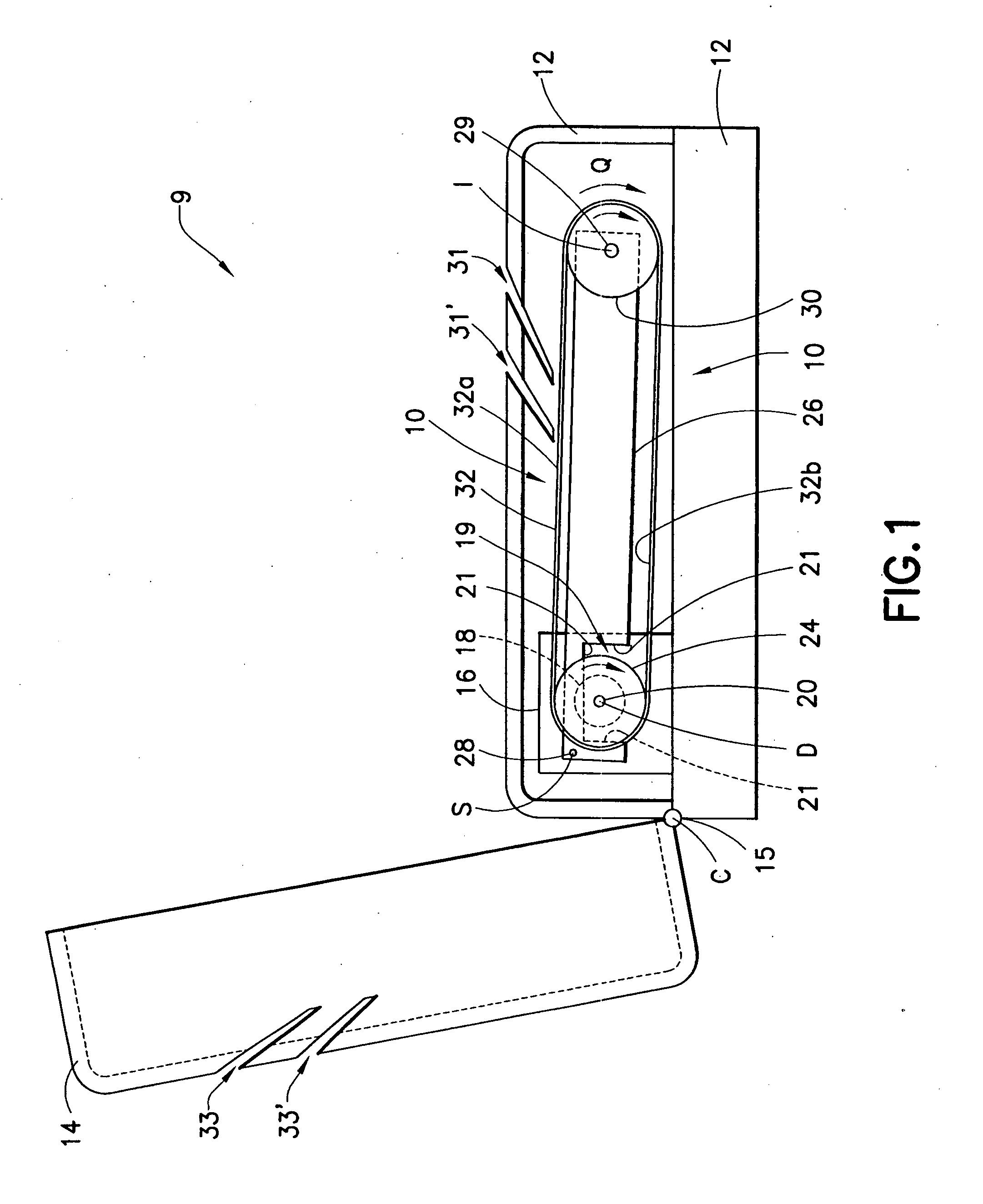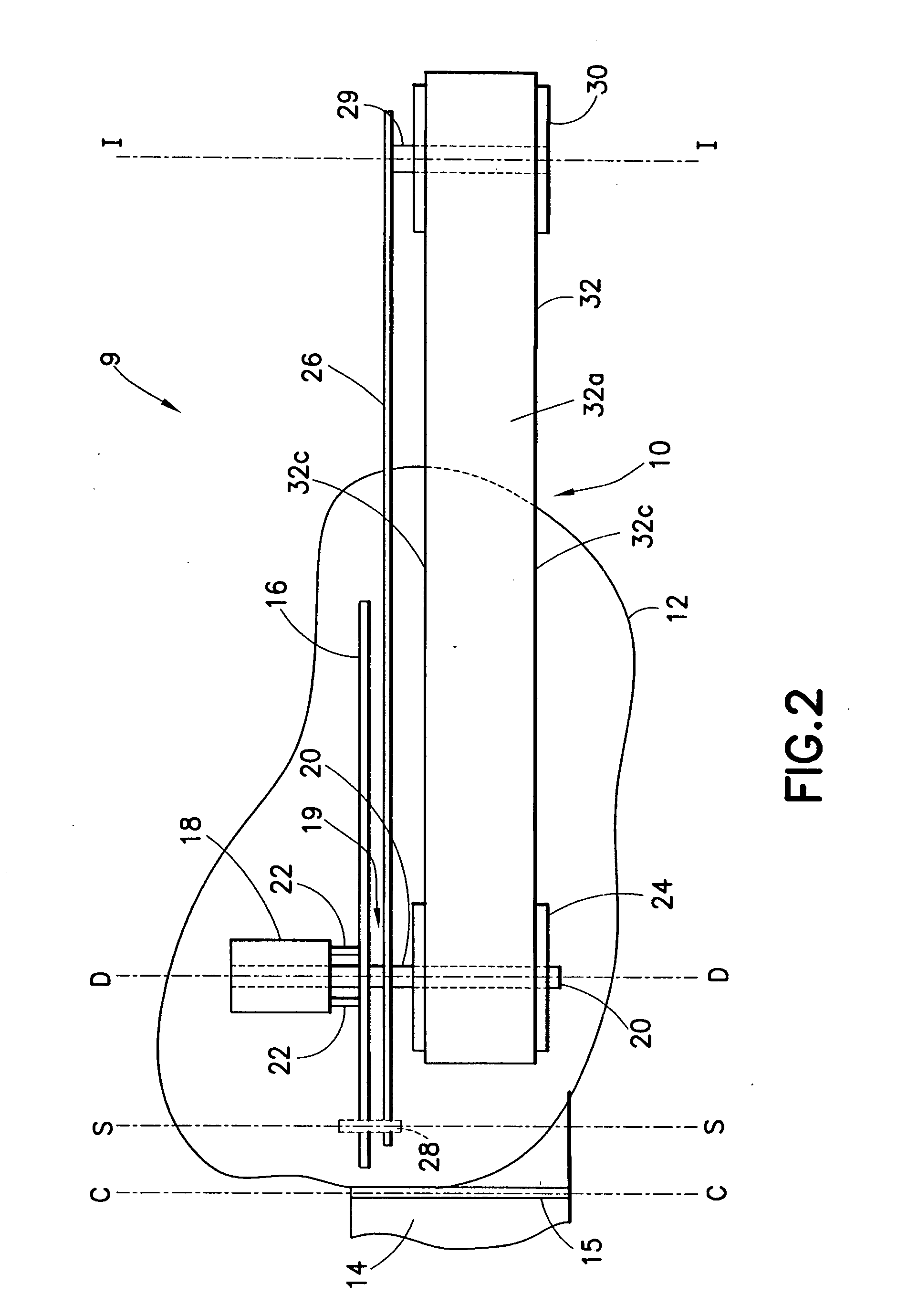Knife sharpening apparatus
a sharpening apparatus and blade technology, applied in the field of blade sharpening apparatus, can solve the problems of accelerated belt wear, accelerated belt wear, and increased belt tension, so as to reduce the tension of the belt, increase the tension, and increase the force
- Summary
- Abstract
- Description
- Claims
- Application Information
AI Technical Summary
Benefits of technology
Problems solved by technology
Method used
Image
Examples
Embodiment Construction
[0047]FIGS. 1 and 2 illustrate a sharpening apparatus, indicated generally at 9, for sharpening knives and other cutting tools having at least one elongated edge. The knife sharpening apparatus 9 includes a frame 12 and a cover 14 hingedly coupled to the frame by a hinge device 15, for rotational movement about a cover rotational axis C between an open and a closed position. In one embodiment, the hinged device 15 is releasable, enabling the cover 14 to be removed from the frame 12. In FIG. 1 the cover 14 is shown in an open position. The frame 12 and cover 14 collectively house a pulley and belt assembly 10 including a drive pulley 24, an idler pulley 30 and an endless belt 32 mounted for rotation between the pulleys. The frame 12 includes two frame guide slots segments 31, 31′ and the cover 14 includes two cover guide slot segments 33, 33′. When the cover 14 is closed against the frame 12, the frame guide slot segments 31, 31′ and the cover guide slot segments 33, 33′ cooperate to...
PUM
| Property | Measurement | Unit |
|---|---|---|
| angle | aaaaa | aaaaa |
| angle | aaaaa | aaaaa |
| angle | aaaaa | aaaaa |
Abstract
Description
Claims
Application Information
 Login to View More
Login to View More - R&D
- Intellectual Property
- Life Sciences
- Materials
- Tech Scout
- Unparalleled Data Quality
- Higher Quality Content
- 60% Fewer Hallucinations
Browse by: Latest US Patents, China's latest patents, Technical Efficacy Thesaurus, Application Domain, Technology Topic, Popular Technical Reports.
© 2025 PatSnap. All rights reserved.Legal|Privacy policy|Modern Slavery Act Transparency Statement|Sitemap|About US| Contact US: help@patsnap.com



